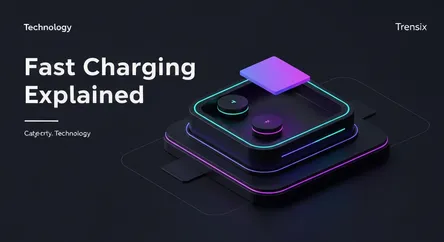Technology
Fast Charging Explained

Learn how fast charging technology powers up your gadgets in a fraction of the time. We explain USB-PD, Quick Charge, and its impact on your devices.
What is it?
Fast charging is a technology designed to decrease the time it takes to power a device's battery. By increasing the wattage delivered to the battery—a combination of higher voltage and amperage—it can replenish a significant portion of a device's power in just a few minutes. This is managed by specific protocols like Qualcomm's Quick Charge and the more universal USB Power Delivery (USB-PD). Smart algorithms ensure the battery charges quickly without overheating or degrading, typically slowing the speed as the battery approaches full capacity.
Why is it trending?
As smartphones, tablets, and laptops gain more powerful features and larger batteries, standard 5-watt charging has become impractically slow. Fast charging addresses this by drastically cutting down charging times, a crucial feature for our always-on culture. The rise of efficient Gallium Nitride (GaN) technology has also fueled this trend, enabling chargers that are smaller, more powerful, and cooler than traditional silicon-based ones. This makes high-speed charging more portable and accessible than ever before.
How does it affect people?
For the average person, fast charging eliminates 'battery anxiety.' The ability to get a 50% charge in under 30 minutes offers incredible convenience, meaning less time tethered to a wall socket. It's a game-changer for travelers, busy professionals, and anyone who needs a quick power boost before heading out. The move towards standardization with USB-C PD also means people can use a single fast charger for multiple devices, from their phone to their laptop, simplifying their digital life.